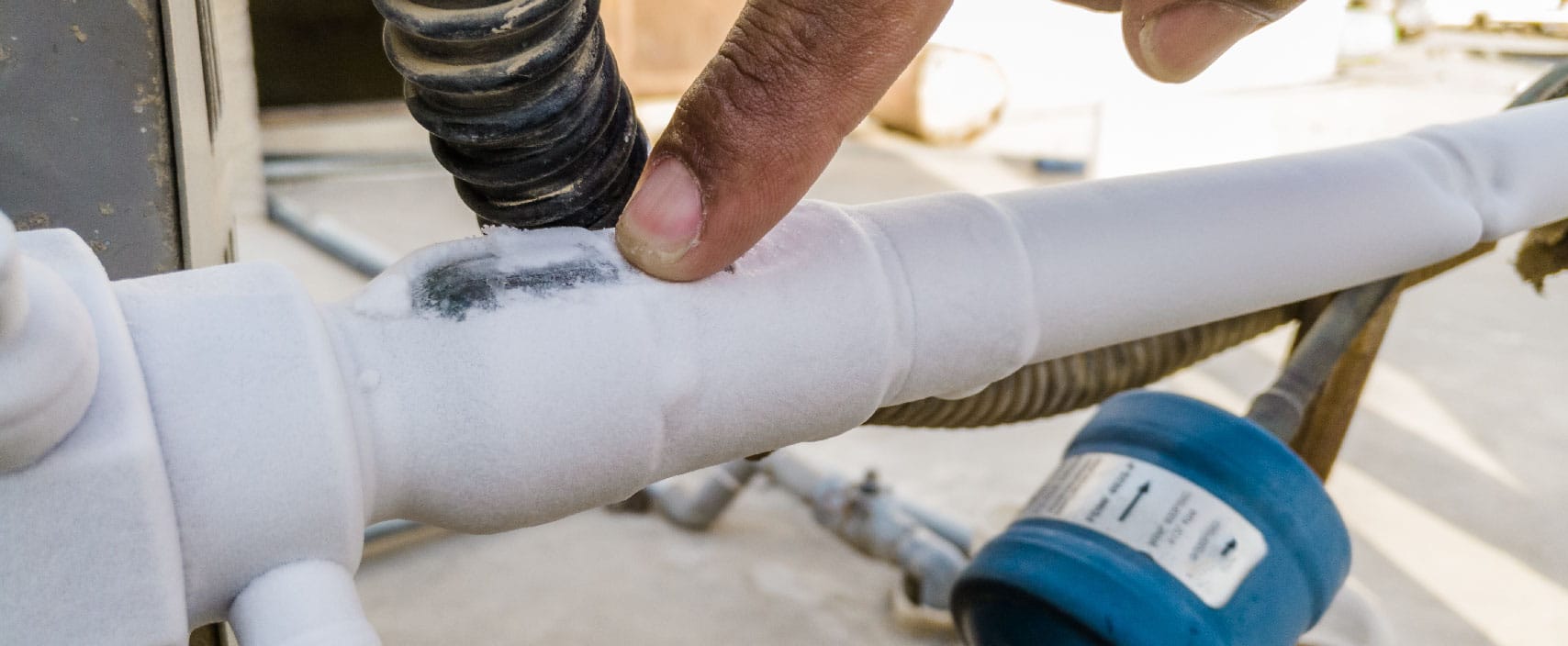Tips for Thawing a Frozen AC Pipe - Restoring Proper Operation
Tips for Thawing a Frozen AC Pipe - Restoring Proper Operation
Blog Article
This post in the next paragraphs relating to What Causes AC Pipes To Freeze? is immensely enlightening. Read it for yourself and decide what you think of it.

Intro
Finding that your air conditioner pipe is frozen can be worrying, specifically during hot summer season when you rely upon your a/c one of the most. Recognizing what to do in such a situation is important to stop more damages to your cooling system and guarantee your convenience inside.
Comprehending the Causes
A number of variables can add to the freezing of an air conditioning pipe. Understanding these causes can help you deal with the issue efficiently.
Lack of Airflow
One common root cause of a frozen air conditioning pipe is inadequate airflow. When the air movement over the evaporator coil is limited, it can create the coil to go down below freezing temperature level, causing ice development on the pipeline.
Low Refrigerant Levels
Inadequate refrigerant levels in your air conditioning system can also result in a frozen pipe. Reduced cooling agent levels can trigger the pressure in the system to drop, resulting in the freezing of moisture on the evaporator coil.
Winter Conditions
In cooler environments, freezing temperatures outside can contribute to the cold of air conditioner pipelines. If your air conditioning unit is not properly shielded or if there are leakages in the ductwork, chilly air can infiltrate the system, triggering the pipe to ice up.
Dirty Air Filters
Dirty or clogged up air filters can restrict airflow in your AC system, bring about numerous problems, including an icy pipe. It's important to replace or cleanse your air filterings system on a regular basis to make certain proper air flow and prevent ice accumulation.
Indicators of a Frozen Air Conditioning Pipe
Identifying the indications of a frozen a/c pipe is crucial for timely activity.
Decreased Airflow
If you notice a considerable decrease in air movement from your vents, it could show a frozen pipeline.
Ice Buildup on the Pipe
Visible ice build-up on the refrigerant line or the evaporator coil is a clear sign of an icy a/c pipeline.
Strange Sounds from the Unit
Unusual noises, such as hissing or gurgling, coming from your air conditioner system can signify that there's ice present on the pipeline.
Immediate Actions to Take
When faced with a frozen air conditioner pipe, it's vital to act rapidly to stop more damage to your air conditioning system.
Turning off the a/c
The initial step is to switch off your ac unit to avoid the system from running and exacerbating the concern.
Checking for Blockages
Evaluate the area around the interior unit for any type of blockages that might be blocking air flow, such as furnishings or curtains.
Thawing the Pipe
You can utilize mild approaches like placing towels soaked in cozy water around the icy pipeline to assist thaw it gradually.
Preventive Measures
Taking preventive measures can assist prevent future occurrences of a frozen air conditioning pipe.
When DIY Methods Fail
If your attempts to thaw the pipeline or address various other concerns are unsuccessful, it's time to contact an expert.
Value of Hiring a Professional HVAC Technician
A qualified HVAC professional has the knowledge and devices required to diagnose and fix problems with your air conditioner system safely and efficiently.
Normal Maintenance Checks
Set up normal upkeep checks with a professional HVAC specialist to guarantee that your air conditioning system is running effectively.
Altering Air Filters
Regularly change or cleanse your air filters to stop air flow restrictions and keep ideal efficiency.
Shielding Exposed Pipes
If your air conditioning pipes are subjected to cold temperatures, consider shielding them to stop cold throughout winter months.
Looking For Professional Help
If DIY approaches fall short to settle the concern or if you're unsure about how to proceed, it's best to look for help from a certified HVAC service technician.
Final thought
Managing a frozen air conditioner pipeline can be a frustrating experience, but recognizing just how to respond can help decrease damage and recover comfort to your home. By comprehending the reasons, acknowledging the indications, and taking prompt action, you can effectively deal with the concern and protect against future events.
Why is My AC Freezing? How to Fix an Icy Air Conditioner
As your air conditioner pumps out cool air to keep you and your family comfortable during the hot Kansas and Missouri summers, you need to feel sure that it will continue to work without fail. Sometimes, air conditioners freeze or become covered in ice. Cates Heating and Cooling wants you to understand why your air conditioner may be freezing up and how you can fix it.
What is Causing Your AC to Freeze?
It can be hard to pinpoint just what is causing an air conditioning unit to freeze, but the only way you can properly fix the problem is to determine the source. Two of the main reasons that air conditioners ice-up are:
Clogged air filters
Clogged air filters restrict the flow of air over the evaporator coils. Restricted airflow can cause the evaporator coil to drop below freezing and accumulate ice due to the humidity in the surrounding air.
Insufficient refrigerant
Low levels of refrigerant can be caused by a leak in the system or from improper installation when first charged. When the refrigerant drops too low, the temperature of the AC’s evaporator coil will drop too low and cause freezing and ice accumulation.
How to Fix a Frozen AC
The first thing you should do when you notice that your AC is frozen is turn the system off. Then, check the air filter to see if debris is clogging up the filter and preventing air from passing through. If your filter is dirty, change it out for a clean one and allow your unit time to defrost. You’ll want to make sure there is no ice on the outdoor unit, main pipe of the indoor unit, or the area around the main pipe. Once completely thawed, turn the system back and make the sure the problem doesn’t reappear.
Regular air conditioner maintenance may help you catch any damage to your air conditioning unit more quickly. These maintenance checks can locate leaks in your system or clogged air filters before they cause a problem for your unit and, in turn, your home.
If your air conditioning unit still isn’t cooling properly, the airflow isn’t improved, or you see ice reappearing on the unit. Call Cates Heating and Cooling right away. Our technicians are available for emergencies 24/7 for situations just like this one, so you don’t have to suffer in the summer heat for long. Since continued ice build-up can cause permanent damage to your air conditioning unit, don’t wait to get a local air conditioning repair service out to look at the unit.
What NOT to Do When Your AC is Freezing
Don’t continue to run the system. You will eventually damage the compressor and burn up the motor if airflow is restricted. If the damage to the parts becomes severe, you may need to replace the entire system. Don’t try to replace the refrigerant yourself without having the system leaks sealed. This won’t fix your problems, and it can result in depletion and re-icing in a short amount of time. Don’t try to remove the ice off of your unit. Instead of helping, you could cause damage to the equipment, which will result in expensive repairs. Instead, turn the unit off and allow it to thaw completely. https://catesheatingandcooling.com/blog/why-ac-freezing-how-fix-icy-air-conditioner/

I stumbled upon that piece of writing on How can I fix an air conditioner’s frozen pipe? while exploring the search engines. Appreciated our blog entry? Please share it. Help someone else locate it. Thanks so much for going through it.
This Post Report this page